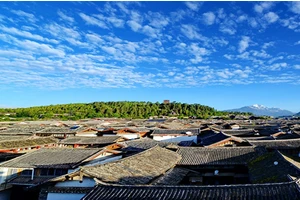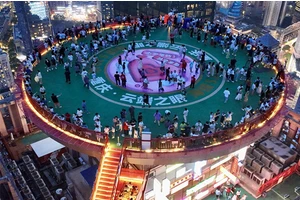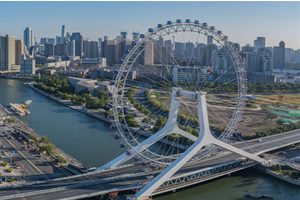Travel pocket
For the choice of backpack, I summarize it as three points-backpack size, comfort and durability.
First, about the size of the backpack
The size of the backpack, that is, the capacity of the backpack, is generally expressed in liters. It is mainly bounded by 50L, and backpacks below 50L and above 25L are used for short and medium distance, while backpacks above 50L are used for long distance. For the choice of backpack size, there is no hard and fast rule, which mainly depends on the number of items you need for hiking, as long as it is enough to hold the items you want to bring. Therefore, different types and distances of hiking need different backpack sizes. Generally speaking, long-distance hiking (more than 10 days) requires a backpack of about 70L, medium-distance hiking (3- 10 days) requires a backpack of about 45L, and short-distance hiking (1-3 days) requires about 30L. But this doesn't mean that you need to buy so many backpacks. If you don't often hike, a backpack of about 45L will be enough.
Second, comfort
Comfort, as the name implies, refers to the comfort of the backpack during hiking. This is the most important parameter for myself. Believe me, you don't want to find your shoulders and neck sore after walking a few kilometers, and then your only thought is to go home ... so how do you choose a backpack that will make you feel comfortable? That is to look at the piggyback system! The so-called carrying system, in layman's terms, is to transfer part of the weight that should have been borne on your shoulders to your waist. To reduce the burden on the body. Moreover, the backpack system can be adjusted according to different figures and heights to achieve the best state. So when we choose a backpack, we must pay attention to the model of the backpack system (generally divided into four types: S, M, L and XL), not too big or too small.
Of course, some people will say why you only talk about carrying, isn't breathability one of the important standards of comfort? I quite agree, but from my own experience of walking in the big luan for several hours, this little breathability is not helpful.
Third, about durability
Outdoor backpacks, especially those with large capacity, are expensive, and you certainly don't want them to break down after a few unused times. So when we choose, durability is also a very important factor (local tyrants just ignore this one).
So how do you see if a backpack is durable? It's very simple, buy one and take it home for use ... (well, I'm teasing X). In fact, before buying, we mainly look at two points, one is the fabric, and the other is the workmanship (that is, the knot is not strong). Fabrics are generally nylon-based, and are generally divided into 250D, 500D and 1000D according to the strength of fabrics. Compared with the fabric, it is simpler to work, mainly depending on the firmness of the joint between the strap and the bag.
Short-distance hiking: 1 ~ 3 days arc❽ryx archaeopteryx-Kata 45
Arc❽ryx archaeopteryx Kea Kata 45 top outdoor backpack
Archaeopteryx is the top brand of outdoor sports. This kata 45 is a product launched by Archaeopteryx in 2012. After a new design, the backpack fabric is durable. The bag body is made of 420D Cordura HT fabric, and the bottom is made of 840D fabric, which is wear-resistant and scratch-resistant; T6061 aluminum supports EV50 foam as a backpack, which is very fit, and it is still comfortable even if it is carried on foot for a long time. Kata, with a capacity of 45L, is the main style of Archaeopteryx's 2-day hiking trip, which is a lightweight and reduced product of altra series. Compared with axios series fabrics, it is stronger and more wear-resistant.
When you are away from home, safety comes first. Backpack is convenient and can free hands, but there is a problem with money security. It is recommended to pack luggage with a big shoulder bag and take a messenger bag with you. It's best to put your bag in front of you at any time in case anything happens to your money.
Travel essentials:
1. Mobile phone, spare mobile phone battery, mobile phone charger. Unless there is no cell phone signal where you are going, bring GPS.
2. Camera, spare camera battery, camera battery charger, spare camera memory card. One of the advantages of the card machine is that it uses an ordinary No.5 battery, so if the rechargeable battery is dead, you can go to the store to buy Nanfu battery. If there are not enough memory cards, prepare some empty DVDs and find a place to engrave the photos.
3. Raincoat, rain pants and umbrella. Usually you don't need it, but you must have it once it rains.
4. Sunglasses and sunscreen. If you go to the seaside, you'd better take them all; You'd better take sunscreen when you go to the plateau, and you need it when you climb the snow-capped mountains, especially sunglasses.
5. Slippers, towels, toiletries (mainly for brushing teeth, washing hair and bathing). It depends on the number of days you go out. If you go out for a long time, you'd better take them with you. The youth travel service you live in probably doesn't have these things, or the place you live in is very simple and impossible. It is comfortable to have a pair of slippers of your own, especially in summer.
6. clothes. It depends on the season, climate and place. If you go to the plateau, the temperature difference between day and night is quite large. Before you leave, it is recommended to look at the local weather forecast, what the temperature is, and all the clothes you should prepare are ready. If there are many clothes, there is a way to save space, that is, roll up all the clothes one by one, which really saves a lot of space! It is best to have quick-drying clothes, although you may also bring a raincoat. More underwear and socks should be prepared. It is best to take a jacket, which can not only keep warm and keep out the wind, but also be used as a raincoat.
7. Paper towels (wet and dry). Needless to say, dry paper towels are very common. Wet tissue can be used when there is no place to wash your face.
8. Small flashlight or headlight. It is necessary to walk at night or camp.
9. purse. It's convenient to take it with you when riding a bike, so you don't have to put a cell phone in your pants pocket. In addition to wallets and mobile phones, you can also put some paper towels, a pack of cigarettes and lighters, and some documents in your wallet. Another advantage of separating these things is that after living in a certain place, you can put other bags in your room and just take them out for dinner.
10. medicine. It depends on one's physical condition. Generally, you should take those for colds and fever, those for internal heat and those for diarrhea. If you go to the plateau, you should take those for high fever, just in case. Of course, it is better if you don't use them! If the accommodation conditions are poor in summer, it is best to bring essential balm, which can repel mosquitoes and refresh people.
11. food and water Don't take it if you can, and don't buy it now if you can go to the local area. First, it takes up too much space and weight, and second, it may not be finished and then wasted. If you really want to bring it, estimate how many meals you need to bring, and which one. If you are physically exhausted, you'd better take a few cans of red bull with you.
12. Knife. Needless to say, it's convenient to cut meat or something when eating. It's best to bring a Swiss army knife and a screwdriver for beer. But be careful when flying, and put the knife in the checked bag, or throw it at the airport.
13. Hiking poles and knee pads. Take everything when climbing mountains, especially when going downhill. Wearing knee pads can obviously protect your knees. If you are hiking, you'd better bring a pair of hiking poles.
14. camping equipment. If you set up camp, you have to take that set, such as tents, damp-proof mats, sleeping bags, floor mats and camp lights. So you have to have a big bag!
15. A few books. If you spend a lot of time by car on the road, you can kill time by taking some books with you, and you'd better find something suitable for reading on the road, such as short essays. You can also bring a notebook to record your feelings every day on the road.
16. Plastic bags. One is used to hold garbage, the other is used to put worn underwear and socks, and the other is used to prevent moisture.
Prev: Where to travel in November?
Next: Tourism frontispiece






